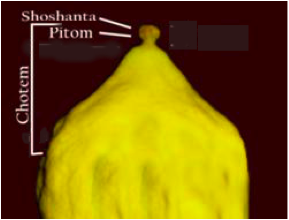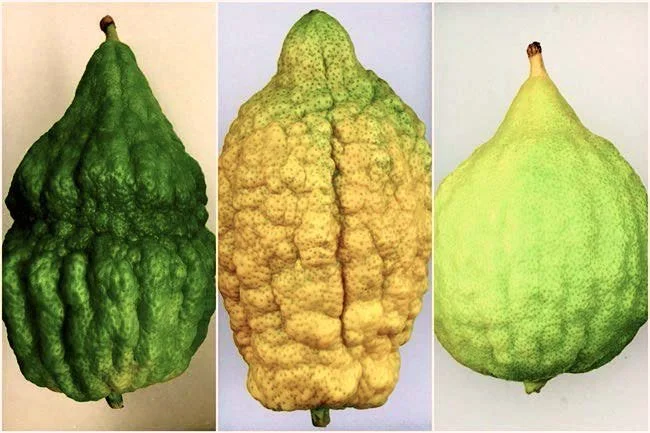Grafted Etrogim
According to the majority of Poskim a grafted etrog is not kosher for the mitzvah at all. So much so, that if one says a beracha on it, the beracha is in vain. Therefore, every store needs to have certification showing that their etrogim are not grafted.
The certification also needs to show that terumot and maasrot were taken from these etrogim, and that they are not orlah (from a tree in its first 3 years).
There are three ways to identify a grafted etrog.
Grafted etrogim are smooth. Kosher etrogim should have a bumpy surface.
Grafted etrogim have the stem sticking out. Kosher etrogim should have recessed stems.
Grafted etrogim have thin and juicy peels. Kosher etrogim have much dryer, thicker peels.
Etrog Which is Missing a Part of the Fruit
If a part of the etrog is missing, it cannot be used on the first day of Sukkot. Likewise, if the etrog has been punctured, and a part of the fruit was removed because of this puncture, it is unfit for use for the mitzvah.
Some etrogim grow with an external pitam (the thin protrusion at the bottom of the etrog). If it fell off entirely, it is unfit for use for the mitzvah. But if the shoshanta falls off (the crown-like piece on top of the pitam), it is still kosher.
If the stem at the top of the etrog that connected it to the tree is broken off, it is unfit for use for the first day of Sukkot.
The Yemenite etrogim grow without an external pitam, and despite this they are kosher to use for the mitzvah.
Black Spots on the Etrog
Wrong Color and Black Spots
A black or white dot that is found on the top section of the etrog (from where it starts to narrow) disqualifies the etrog for the first day of Sukkot. But for Ashkenazim it is disqualified all of Sukkot. Black spots also disqualify it if they are found on the pitam. The reason is because people usually look at the top of the etrog, so it must be clean.
If the dot was found below the place where the etrog narrows, it is kosher even for the first day of Sukkot. But if there are two or more dots, Sepharadim disqualifies it for all of Sukkot. For Ashkenazim it is kosher for use for the mitzvah, unless dots are found on both the top and the bottom parts of the etrog.
Only black and white dots that are part of the etrog, and can't be removed through cleaning the etrog, disqualify it. Any other color of dots is permissible.
Many times there are leaves attached to the etrog (bletlach). Those leaves do not disqualify the etrog, as long as one cannot feel that the leaf is sticking out from the surface of the etrog. The majority of etrogim in our days that have these leaves do not stick out from the surface of the etrog, and are therefore kosher to use lechat’hila.
The Color of the Etrog
The best color is yellow or gold all over the etrog. Light green is kosher lechat’hila. A dark green color that is the same shade as grass is disqualified.
The Shape of the Etrog
Etrogs that are too round
The shape of the etrog needs to be wide in the middle, and narrow as it gets to the top. The pitam needs to be opposite the stem, but if it is not it is still kosher – it is just not the choicest etrog. The etrog cannot be round like a ball.
Weight of an Etrog
Definitely a big enough etrog
A kosher etrog needs to weigh at least 100 grams of 3 ½ ounces. The etrog can be bigger, even if you would need to carry it on your shoulder. The overwhelming majority of etrogim in the market are the normal weight.
A dry etrog from last year may not be used, but if it was placed in a freezer it can be checked with a needle with a string attached to it. If the needle is pushed in and the string comes out wet, one can use that etrog.




